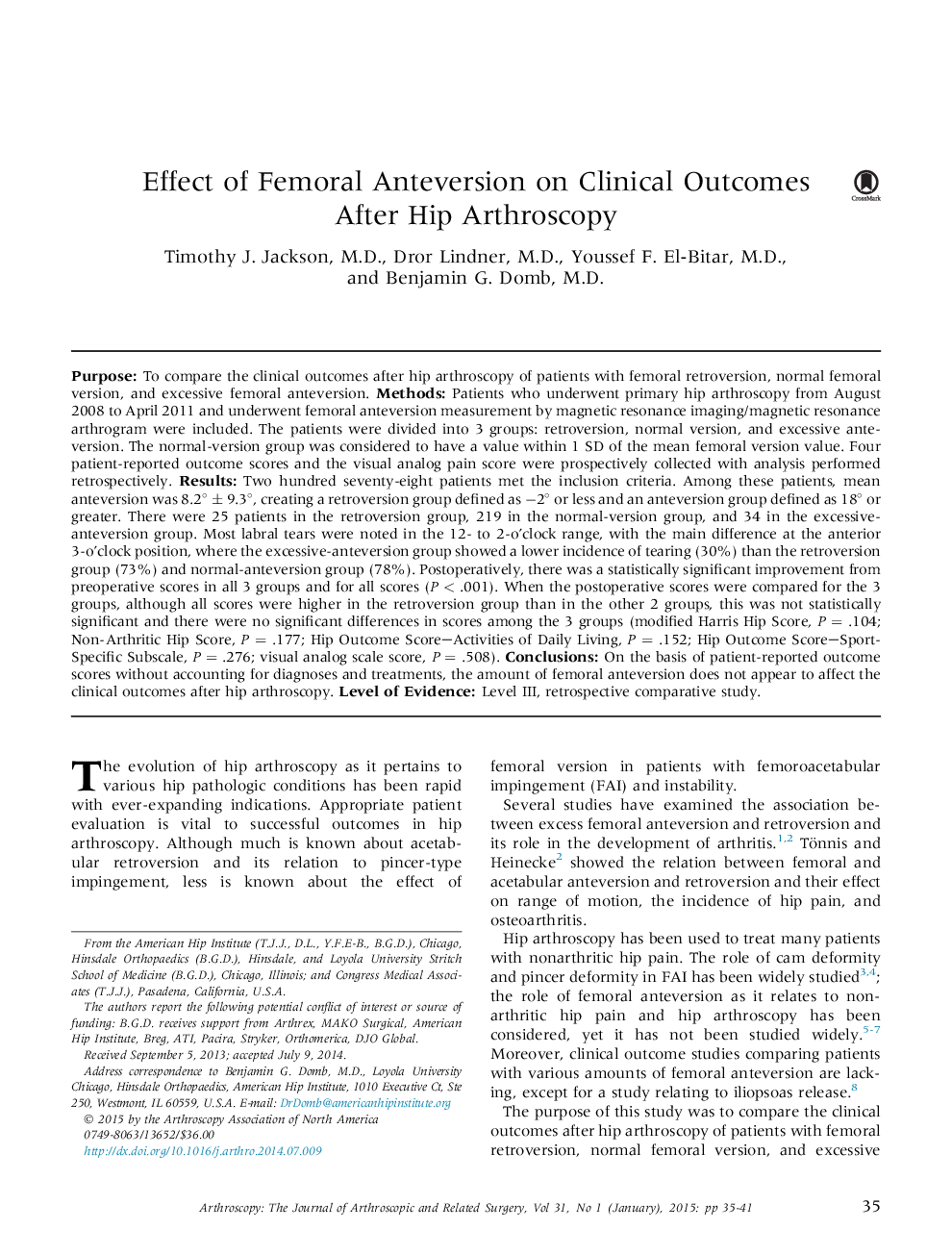| Article ID | Journal | Published Year | Pages | File Type |
|---|---|---|---|---|
| 4042722 | Arthroscopy: The Journal of Arthroscopic & Related Surgery | 2015 | 7 Pages |
PurposeTo compare the clinical outcomes after hip arthroscopy of patients with femoral retroversion, normal femoral version, and excessive femoral anteversion.MethodsPatients who underwent primary hip arthroscopy from August 2008 to April 2011 and underwent femoral anteversion measurement by magnetic resonance imaging/magnetic resonance arthrogram were included. The patients were divided into 3 groups: retroversion, normal version, and excessive anteversion. The normal-version group was considered to have a value within 1 SD of the mean femoral version value. Four patient-reported outcome scores and the visual analog pain score were prospectively collected with analysis performed retrospectively.ResultsTwo hundred seventy-eight patients met the inclusion criteria. Among these patients, mean anteversion was 8.2° ± 9.3°, creating a retroversion group defined as −2° or less and an anteversion group defined as 18° or greater. There were 25 patients in the retroversion group, 219 in the normal-version group, and 34 in the excessive-anteversion group. Most labral tears were noted in the 12- to 2-o’clock range, with the main difference at the anterior 3-o’clock position, where the excessive-anteversion group showed a lower incidence of tearing (30%) than the retroversion group (73%) and normal-anteversion group (78%). Postoperatively, there was a statistically significant improvement from preoperative scores in all 3 groups and for all scores (P < .001). When the postoperative scores were compared for the 3 groups, although all scores were higher in the retroversion group than in the other 2 groups, this was not statistically significant and there were no significant differences in scores among the 3 groups (modified Harris Hip Score, P = .104; Non-Arthritic Hip Score, P = .177; Hip Outcome Score–Activities of Daily Living, P = .152; Hip Outcome Score–Sport-Specific Subscale, P = .276; visual analog scale score, P = .508).ConclusionsOn the basis of patient-reported outcome scores without accounting for diagnoses and treatments, the amount of femoral anteversion does not appear to affect the clinical outcomes after hip arthroscopy.Level of EvidenceLevel III, retrospective comparative study.
